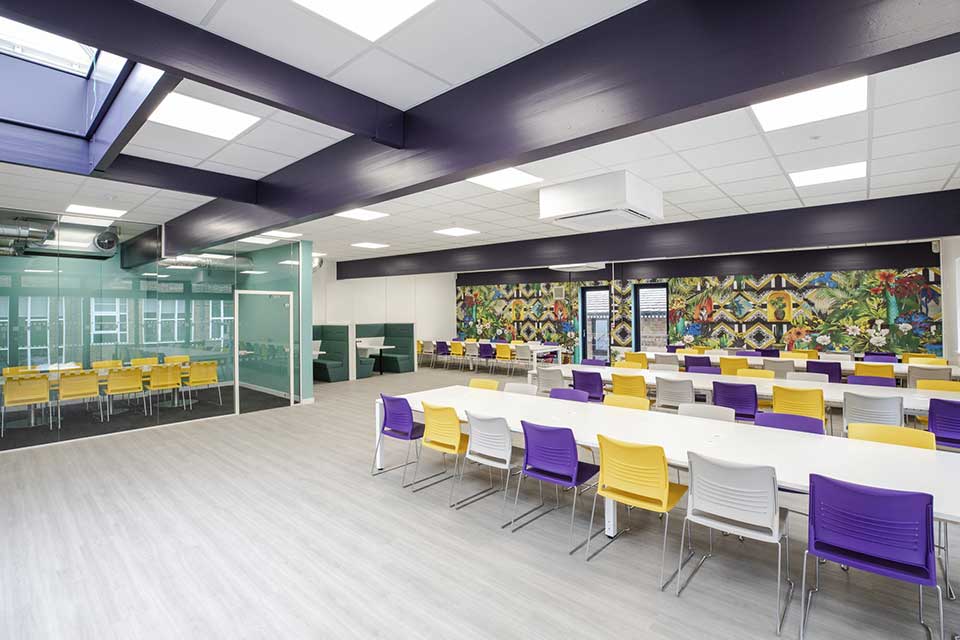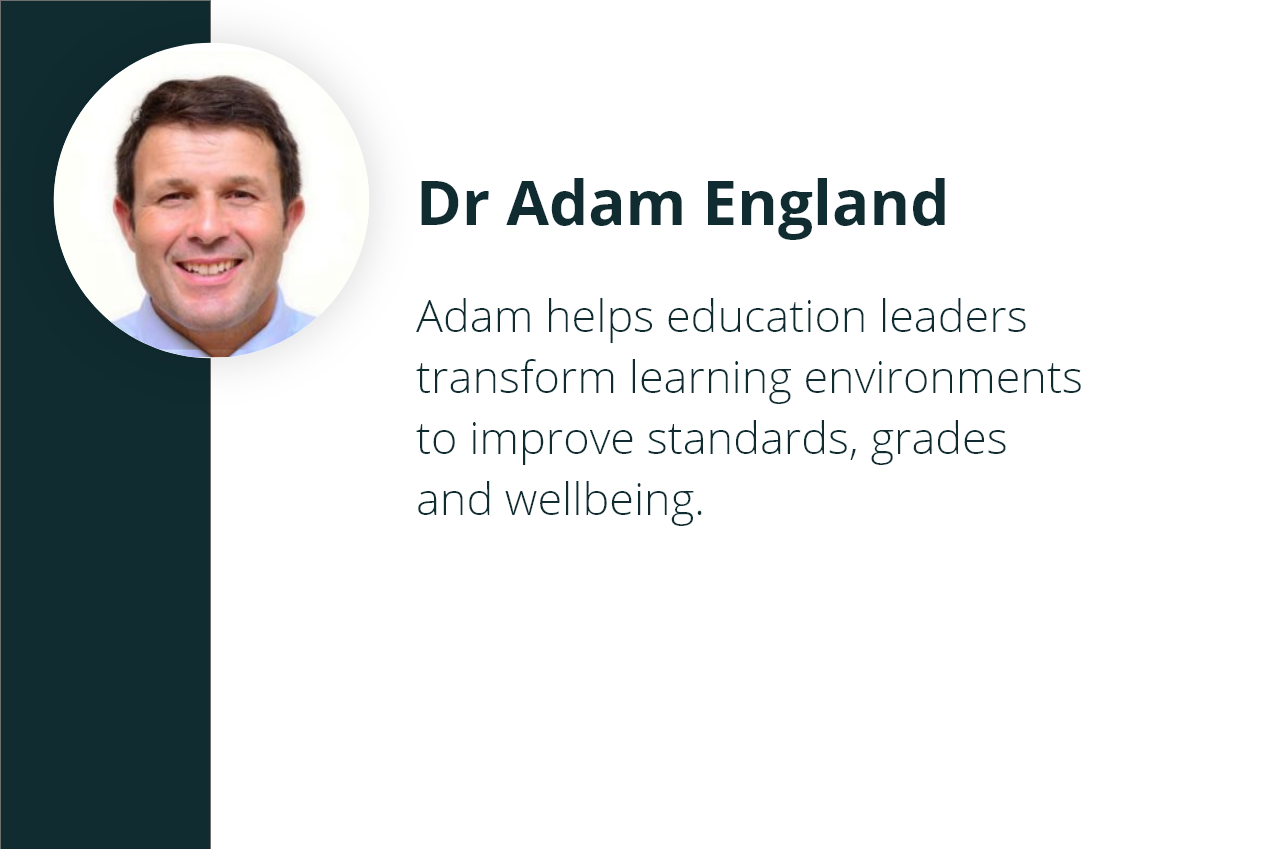The Perfect School

What does the perfect school look like?
Have you ever wondered what the ‘perfect school of the future’ could, should and would look like?
And what does ‘perfect ‘mean in this context? Is ‘ideal’ a better word than ‘perfect’?
Whichever word you choose I bet you’re thinking, ‘perfect school equals beautiful new school’ – white buildings, white floors, perfect furniture.
Well, I am here to disabuse you of that notion because I don’t think that the perfect, or the ideal school, will look at all like that. I think it will actually be a mixture, an amalgamation, a melting pot if you like of various different architectural styles and various different designs, hopefully repurposing some of our old, redbrick buildings, our Grade 2 listed buildings, and mixing them with more modern buildings to make sure that we create an environment, or a suite of environments, that speak to the neurodiverse and the neurotypical.
The reason I want to embed that notion in your thinking and my thinking is that we don’t want to think that the future is necessarily and sterile. That was a mistake made in the late 1950’s and the early 1960’s when it was thought that by bleaching the ground, by bleaching schools, by bleaching food we would actually make it better but what happened was we actually took all the goodness out!
A lot of the same happened in education. We took a lot of the goodness, the diversity out of environments by trying to homogenise them, by going for that prison / hospital look and feel which was white, and with uniform lighting – homogeneous classrooms in standard sizes.
So what does a school of the future look like?
I firmly believe that an ideal school of the future will speak to the neurodiverse and the neurotypical. Most learning environments take only about 20% of neurotypical learners on the learning journey with them. That’s because the admixture of optical flow, acoustic management, affordance perception, textures, shape, movement of air, epistemological flow and so on are not optimised to speak to a broader spectrum of learners.
That future school is going to have to create environments that foster iterative learning; that speaks to the core skills of literacy and of numeracy and above all else, I believe – and here you can tell I used to be an English teacher – they will mean that the core aspects of literacy (reading, writing, speaking and listening) run throughout the curriculum in every area you are in.
In other words, English (or whatever your first language is) is not just something you do in one classroom, it has to run throughout the whole learning environment. If you enjoy your reading, if you’re excited by it, the rest of the curriculum will fall into place.
One example of what an ideal future school looks like is one where you have an environment which encourages everybody to read wherever it is they go to learn, and we get away from this horribly embedded sense of a siloed curriculum. Let’s get rid of that. Let’s put projects in place and environments in place which foster reading and writing across whichever learning space you happen to be in. So this will be a very holistic environment, and I also believe it will be an environment that is immensely flexible. Let’s bring the outside inside and vice versa. This gives you polymorphic, student-centric spaces reverse engineered through empathy mapping to speak to the needs of as many students as you possibly can.
Clearly, collaboration is going to be absolutely massive. We can all agree there has been a significant reduction in boys’ literacy during the pandemic. Therefore, if most boys are learning watching by short YouTube and TikTok videos, how are we going to get them learning productively and profoundly at school? We are going to have to leverage on peer support. Peer support can only occur in areas that foster collaboration.
Imagine for one minute an area with woeful acoustics, with reverberation bouncing off the ceilings and the walls. How can you, as a boy, collaborate effectively in those environments? The corollary to that is, how can you, as a boy, actually learn full stop in those environments? So we have to think of environments where acoustics are carefully managed to foster collaborative learning and peer support that is so critical to boys’ progress.
What is the optimum mix?
Now when you ask us – and you will – what is the optimum mix of optical flow, of floorage perception, light and acoustic management and so on, we are going to have to say empirically we do not know. That is why we have set up an extensive research project to find out more.
We want to know how texture interacts with affordance perception, optical flow etc and speak to various learners whether neurodiverse or neurotypical and look at their results, wellbeing, self-esteem and emotional intelligence and try to work out what the optimal combination is for each learning style because we just don’t know. We can speak from observation or anecdote which gives us the qualitative evidence, but we will need more quantitative or standardised evidence to corroborate what it is we think we know.
That is where you come in.
This is an iterative project and as the design thinking develops, regarding what the ideal school will look like in the future, your observations, conclusions and iterations of what that ideal environment is will be vital. So please feel free to contribute them.
Finally – what is assessment going to look like in the school of the future?
I assure you it is not going to be summative or putting a series of ticks on a piece of paper and passing it back to a pupil simply marked 9/10. My own viewpoint (and I hasten to add it is my own viewpoint) is that assessment obviously has to be much more formative, and interaction with carefully designed environments will be right at the top of the tree of assessment.
It might even be in the form of a video file, a short one, sent to parents and carers, saying this is how your child interacted with environment X and we could see your child’s collaboration with peers A, B and C fostered a certain level of empathy, innovation and literacy. Comments such as those are going to tell you far more about character, and the potential of growth for a character, than a score of 9/10 ever will.
In a nutshell, the future proof school doesn’t necessarily look futuristic, it will draw on a huge variety of environments, it will foster skills, it will have a very different look and feel and a very different way of assessing pupils but above all else I will tell you this: it will be reverse engineering through empathy mapping to ensure that learners’ wellbeing and engagement with learning will be optimised and then maximised; and then through wellbeing and engagement is where the leverage will come for standards and outcomes.
Don’t forget – we really want to hear about your experiences with the various iterations of learning spaces you have used. It’s only by sharing and talking about these experiences and explorations that we will find the optimal combinations of all the factors in any one space or environment to support the broadest range of learners possible.
So please, join our design thinkers group, share your experiences, talk to us about the iterative facets of what it is you have done and above all else, please remember that by doing that, that is how we will successfully design the school of the future.
Noble and Eaton have created a range of informative guides specialising in the intelligent design of learning environments for school leaders. We have extensive experience and success leading schools in the UK and internationally.
If your school has faced similar challenges, you can find out more information from our leading consultant Dr Adam England. He would be able to visit your school and explain how you can fully support your students with learning disabilities and achieve positive outcomes for your school by increasing your students’ health, wellbeing and success.
If you would like to book in a free walkaround consultancy, please use this booking link here




